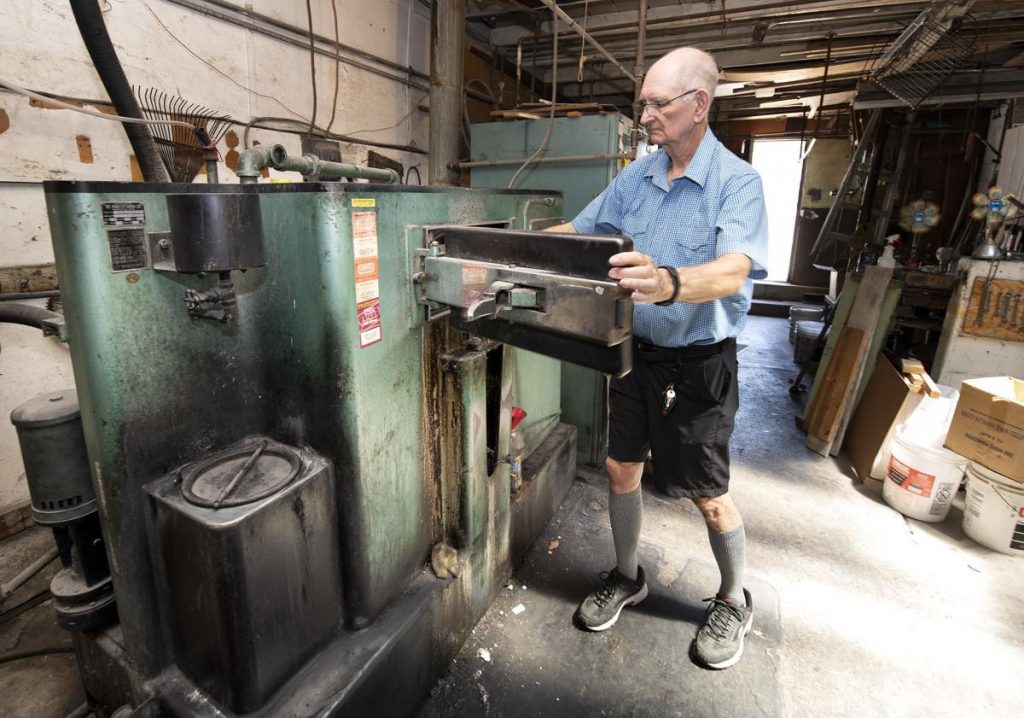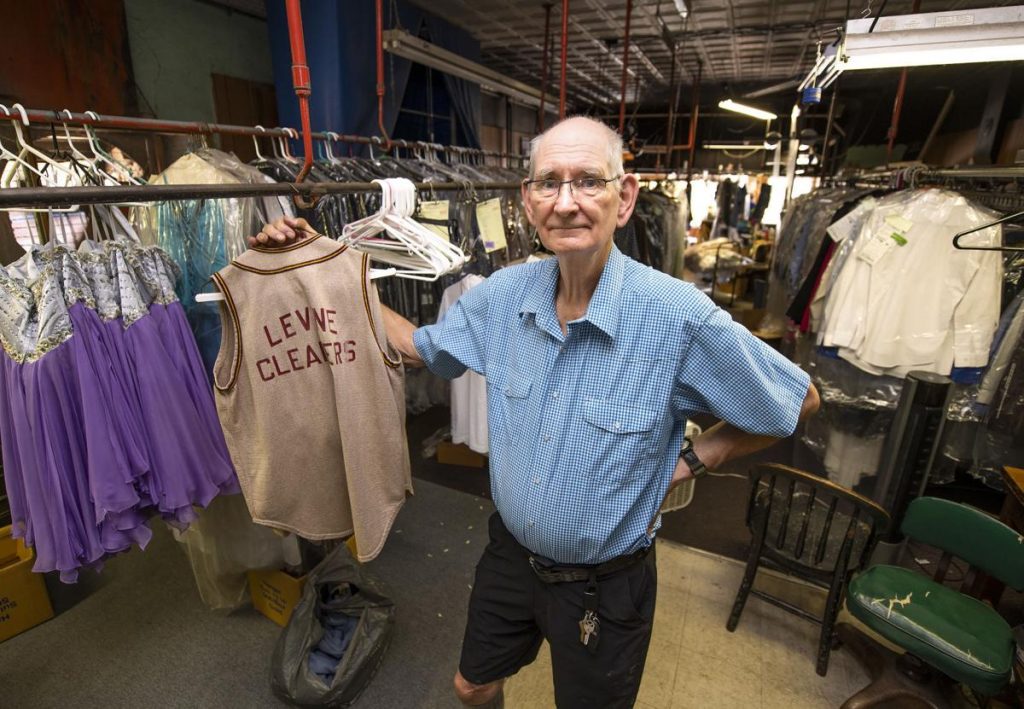After 70 years in business, Levine Cleaners is set to close July 30 — “if not before,” said Carol Levine, 75. The couple would like to retreat to the air conditioning as soon as possible.
“The hotter it is, every day I have to get up — I just want it to be over,” she added.
The shop at 2116 Dakota Ave. remains open now for only one reason: so that customers can pick up their dry cleaning and repaired clothing before the couple turns the keys over to the building’s new owner.

They stopped accepting cleaning and repair jobs some time ago — Al ran his last load of dry-cleaning on June 11 — and they want all the pants and coats and gowns and shirts picked up as soon as possible.
They’ve done their best to reach out to the people who need to pick up their cleaning. It’s not exactly an easy process.
“(Sometimes) the phone’s disconnected, or I wrote the number wrong, or they told me the wrong number — I’ve found some on Facebook,” Carol said.
Scores of garments remain hanging through the shop, and they don’t expect all of them to be claimed and paid for before they close — they once held onto a coat for seven years before the customer came back for it.
This time around, they’re not going to wait seven years for the last of the garments to be picked up.
“We’ve got stuff here, three years old, four years old,” Al Levine, 76, said over the loud hum of a box fan on a recent Saturday morning.
The couple have sold their building, which dates to 1930, to an unnamed buyer.
70 years of dry cleaning
Levine Cleaners has operated in the same brick building along Dakota Avenue since 1951, when Al’s parents, Edwin “Ed” Levine and his wife, Ada, set up shop there. Al was about 7 years old when the store opened.
Ed Levine, a native of Missouri who moved to Sioux City in 1934 and then to South Sioux City in 1938, got his start in the dry cleaning business probably in the late 1930s or early 1940s, Al said. (He wasn’t entirely sure of the date because he wasn’t born yet.)
As the story goes, Ed Levine marched into the Cusack-Baumann laundry and dry cleaning shop on Pearl Street sometime before the war and asked for a job. He was told that, without any experience, the shop had no use for him.
“And my dad started walking away, and he turns around and says, ‘How in the hell do you get experience?'” Al Levine said. “And the guy says, ‘You want to work, don’t you?'”
So Ed Levine started working in Cusack’s laundry. Sometime thereafter, he went to work for another dry cleaner in the area where West Seventh Street becomes Villa Avenue.
Later Ed Levine bought equipment and opened his own shop in South Sioux City, which he operated until his death in 1968 at age 57. Ada died the following year at 59.
Al, who “grew up in the business,” took over the shop after his parents were gone. Carol started working there in 1972, “because,” she said, “they couldn’t keep a counter person.”
Long recession for dry-cleaners
As it would happen, Al and Carol taking over the shop coincided with the beginning of a decades-long slump in the dry-cleaning business. At one time, they said, there were 12 or 15 dry cleaners in metro Sioux City.
After the Levines close, there will be no dry cleaners in South Sioux City and only two left in Sioux City — the Davenport Cleaners on Pierce Street, and the Bush Cleaners on Morningside Avenue.
The pandemic made the dry-cleaners’ lot even worse, because for months on end many people had no need to wear neckties, suits or other dress wear that required dry cleaning.

Still, the Levines were able to eke out a living from the store. Up until the end, Al was still using the very-old Huebsch and Sol-Vic machines, purchased by Ed Levine in about 1965.
Al had his own special dry-cleaning technique (or perhaps, recipe) involving solvents, mineral products and carbon black — the shop didn’t use perchloroethylene, a dry-cleaning solvent commonly known as “perc,” that has been suspected of causing cancer in dry-cleaning workers exposed to it constantly.
The teal-colored machines, though still functional, were falling into a state of disrepair, with only Al himself being familiar enough with them to keep them humming.
“I’m the only one that can probably run it, because it’s old and some of the parts aren’t working, so I have to do it manually,” he said.


